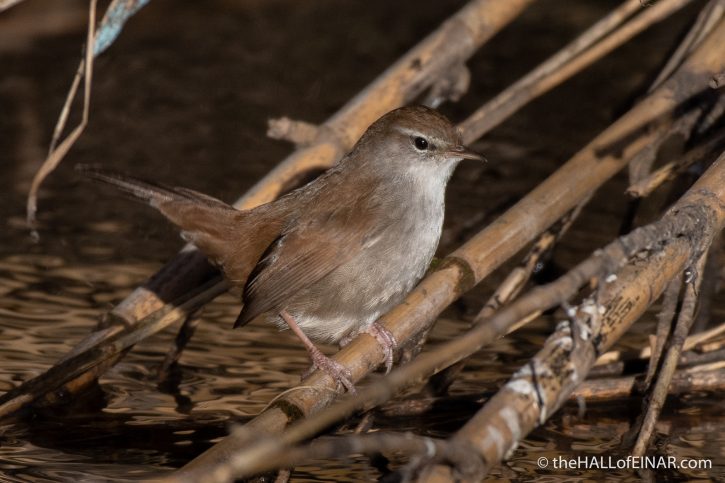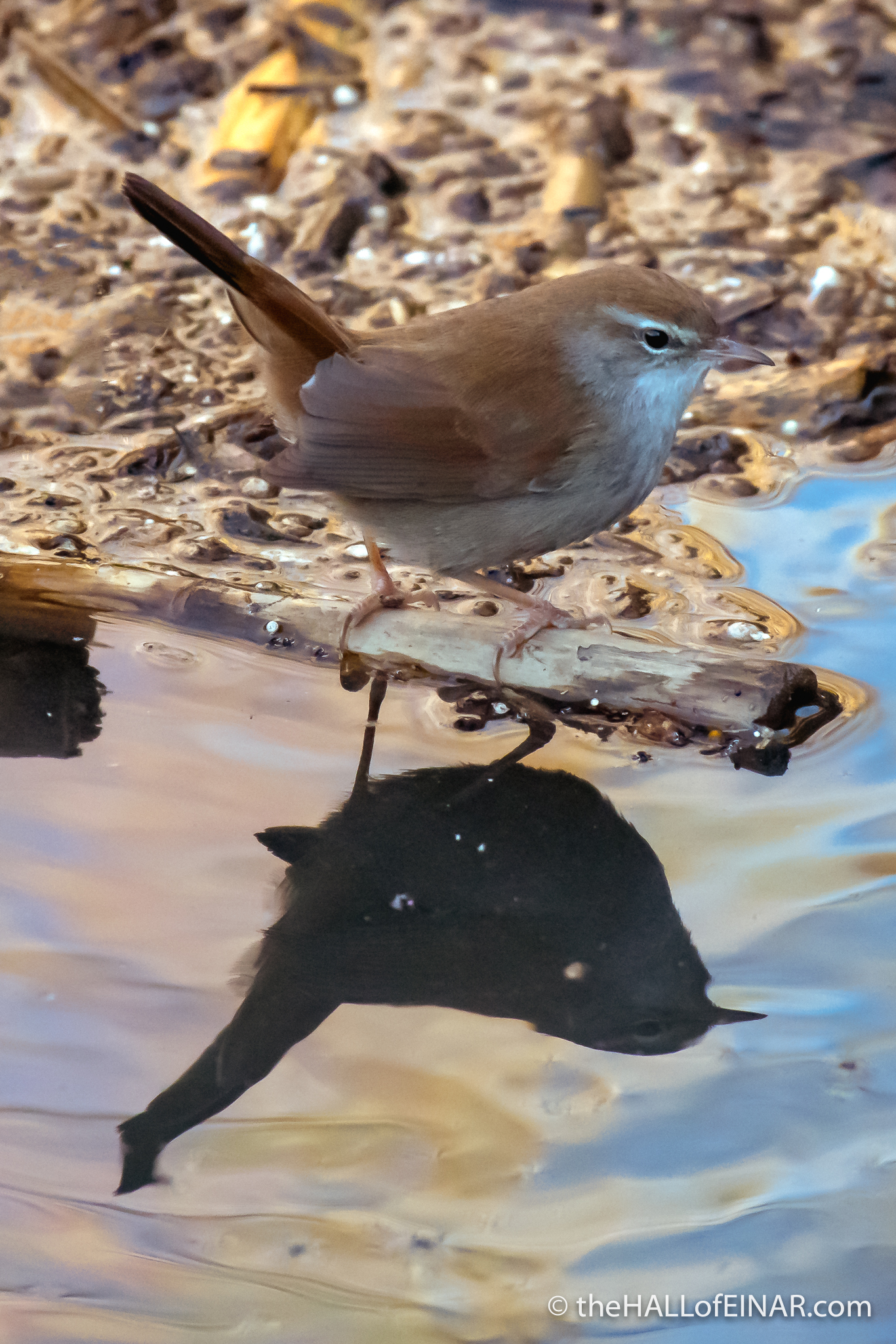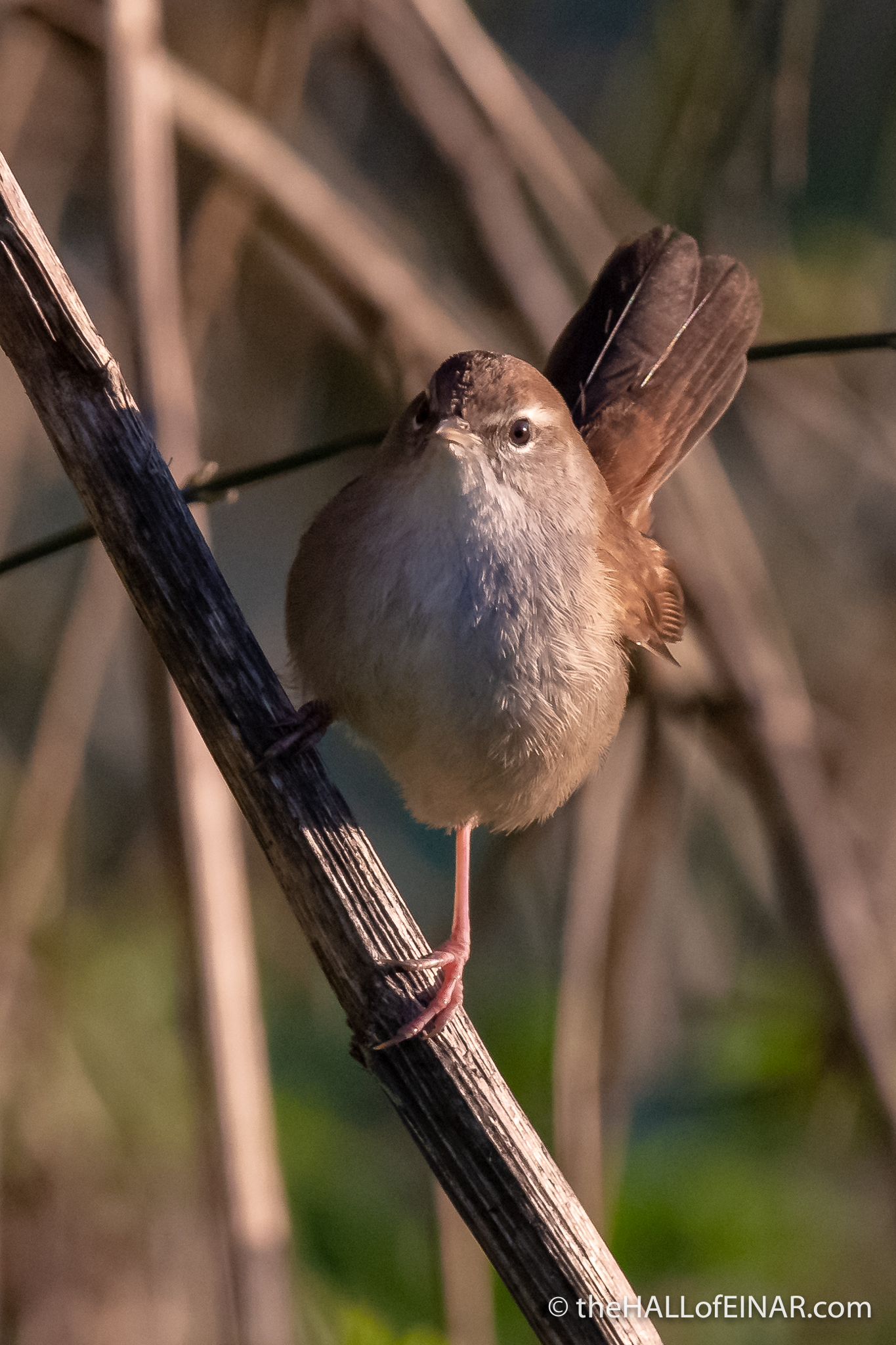Signor Cetti and the River Nightingale
I’ve heard a Cetti’s Warbler before. They’re loud. Very loud. I’ve even learned to identify their call with confidence.
I can hear one screaming from deep within the undergrowth and confidently say “Oh yes, that’s a Cetti’s warbler.” Have I ever seen one? Well, apart from the silhouette of a warbler at RSPB Ham Wall, no, I haven’t. It’s not as if I haven’t had enough chances; I’ve heard them often enough. Cetti’s Warblers are the dictionary definition of skulking.
My ears prick up when I’m walking around Parco della Caffarella in Rome when I hear its distinctive screech. It’s somewhere down below, amongst a dozen Chiffchaffs. Then I see it:

What a lovely bird. To say the light was challenging is an understatement. It’s a pale ghost of a breast in the gloom below:

Cetti’s Warbler is named in honour of Francesco Cetti, who lived from 1726 to 1778. He was an Italian Jesuit priest, zoologist and mathematician. He first described it for his book on the wildlife of Sardinia. At least it’s named Cetti’s warbler in English. In Italian it’s known as L’usignolo di fiume. Usignolo is Nightingale and di fiume is ‘of the river’. Cetti doesn’t even get a mention in his native language.
It’s the Nightingale of the River:

It’s taken me an hour to get these images. It’s been working its way along the river bank and I’ve had to track it from one side to the other, across the bridge and back again. Despite the poor light, I like this image of it reflected in the stream.

Me being me, I find a copy of Cetti’s classic book Storia naturale di Sardegna from 1774 and the entry on the Usignolo di Fiumi on page 294:
L’usignuolo di fiume
“Un uccello e nella figura, e nel suo color rossigno assai simile all’usignuolo suol qui udirsi per gli alberi in riva ai fiumi; non differisce esso quasi dall’usignuolo se non in quanto è minore di grandezza, e non ha quei cerchietti bigi al ginocchio. Il suo canto è parimente soave, la voce liquida e forte. Non v’è nome per quest’uccello nell’idioma sardo; e forse è desso quella spezie, che i Greci presenti, al riferir di Bellonio, chiamano potamida, e ascrivono fra gli usignuoli. Il no- me certamente di potamida indica, che l’uccel greco ama i fiumi; e l’ascriverlo fra gli usignuoli, mostra che agli usignuoli esso si assomiglia.”
I can only translate elements of it but I love what I find:
The River Nightingale
“A bird is in the figure, and in its reddish color very similar to the nightingale, here it is heard by the trees by the rivers; it does not differ from the nightingale except it is less than great, and does not have those little ash-coloured rings at the knee.”
At least, that’s my best effort. Google translate does’t have an 18th century Italian option.
“His song is likewise suave, the voice liquid and strong.”
What a perfect description.
Later in the afternoon I hear another one in the undergrowth, blasting its song with the volume and tone that only a small bird can manage. I approach and it hops out in front of me.
The warm evening light illuminates it and shows what a wonderful bird it is.

It’s very suave.